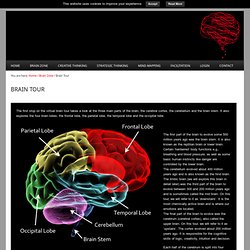

Learn Science at Nature. NSDL.org - National Science Digital Library. Exploratorium: the museum of science, art and human perception. Chemistry. TED Science. Lesson Plans. The lesson plans presented here are a sampling from NWF's collection of over 1,000 lesson plans designed to introduce students to life science, ecology, wildlife biology, scientific identification and observation.

All lesson plans are aligned to the National Science Education Standards. Check back regularly! We will be continually adding to our online library of resources for educators, beginning with the addition of lesson plans from our NatureScope series. Habitat Lessons designed to introduce students to concepts of ecology, habitat care and species identification: Energy Conservation Lessons designed to engage student in learning good conservation techniques and practices to use at home and at school: Energy Conservation: Did I Remember To… (grades 4-6) Ecosystems Lessons that explore ecosystems within the United States: ArcticWatersheds Wildlife Lessons that introduce students to wildlife and wildlife behavior:
50 Really Cool Online Tools for Science Teachers. A 21st-century education revolves around the Internet for everything from collaboration, tools, lessons, and even earning degrees online.

If you are looking for ways to integrate online learning into your science class or science degree programs, then take a look at these cool online tools that are just perfect for both teachers and students. Science Tools to Use with Students These tools offer opportunities for learning about climate, cells, the human body, nature, and more. ChemiCool. Share this periodic table with your class for an easy to use tool with information on each of the specific elements.GPS Activities and Lesson Plans. AP Tools Whether you are setting up a new AP curriculum or are just looking for additional material to use with your AP science students, these tools will help.
Advanced Placement Biology. Websites and Resources for Science Teachers. 3-6 Student Interactives - Science. Interactive Weather for Kids - The Weather Channel Kids. Your Amazing Bran. The first stop on the virtual brain tour takes a look at the three main parts of the brain, the cerebral cortex, the cerebellum and the brain stem.

It also explores the four brain lobes: the frontal lobe, the parietal lobe, the temporal lobe and the occipital lobe. The first part of the brain to evolve some 500 million years ago was the brain stem. It is also known as the reptilian brain or lower brain. Certain ‘hardwired’ body functions e.g., breathing and blood pressure, as well as some basic human instincts like danger are controlled by the lower brain. The cerebellum evolved about 400 million years ago and is also known as the hind brain. The limbic brain (we will explore this brain in detail later) was the third part of the brain to evolve between 300 and 200 million years ago and is sometimes called the mid brain. The final part of the brain to evolve was the cerebrum (cerebral cortex), also called the upper brain.
Each half of the cerebrum is split into four lobes. Planet Science. Physics. Light, Heat, Electricity, and Magnetism. Simple Machines. Theory of everything. The Particle Adventure. Quantum Physics. Quantum Physics What it is?

Quantum physics is a branch of science that deals with discrete, indivisible units of energy called quanta as described by the Quantum Theories. Quantum physics invloves the study of the realm of the very small, at the atomic and subatomic level, such as electrons, photons and quarks. Therefore, it’s operating at the below-cell level of the body. Quantum Physics is also the study of the forces that act on atomic and subatomic entities. Quantum Physics also studies the fields through which forces move. Standard quantum physics has three primary areas of focus: Quantum mechanics: The study of the structure and behavior of subatomic particles.
Quantum Physics Models:There is not one quantum theory, but many theories, each interpreting the same body of experimental facts: How does Quantum Physics relate to Bioenergetic Medicine? The quantum world is an abstract, mathematical world. Quantum Weirdness 1 A scan is always about that individual dynamic body-field only.